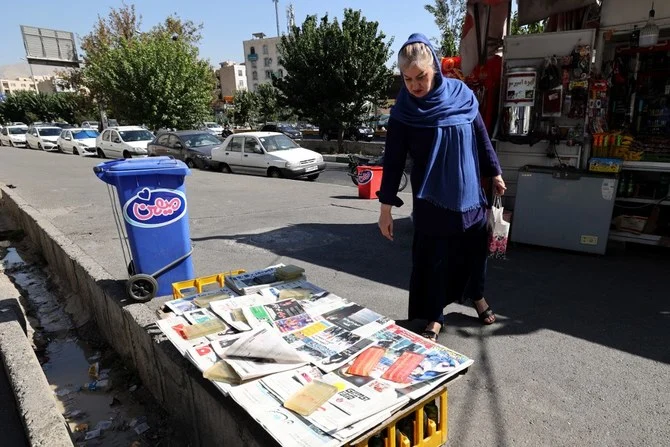
- ARAB NEWS
- 06 Jul 2025

The Iranian state has tried to squash the country’s protesters with threats. It has tried to crush the demonstrations with violence. We have seen this before, many times in recent years, and the state is well used to inflicting mass killings to maintain its hold on power. This time, however, it does not appear to be working.
The protests continue. Led by women, Iranians have taken to the streets across the country — including in rural and religious towns far from Tehran, where some international observers continually claim the regime’s hold on the minds of the people is unshakable.
The women have unveiled themselves, cut their hair ceremonially and openly challenged their clerical masters.
We have already seen how the regime will respond: With violence, subversion and the assumption that the world will do nothing to help Iran’s women as they are beaten, tortured and killed. That assumption is, sadly, almost certainly correct.
But what Iran’s leaders and its Islamic Revolutionary Guard Corps may not yet understand is what separates these protests from previous periods of public discontent. Most protest movements in recent years have begun because of economic conditions: High fuel prices, the rising cost of food, etc. Those protest movements inevitably became more political, as any protest movement in a theocratic dictatorship is apt to be.
But these protests are different. They were political — and in favor of radically changing, or even overthrowing, the government — from the first.
The state’s “morality police” murdered Mahsa Amini, the 22-year-old woman whose brutal death sparked the protests. It is against a government that would do such a thing that the people of Iran are protesting.
That has given protests a new character. Rather than being about the expression of public discontent at material conditions — protests aimed at making the state see how the people are suffering — these demonstrations are more existential. When Iran’s women call for the death of the dictator, they are unlikely to be beaten from the streets with batons or driven away by the first volley of gunfire.
The opposite is often true in cases like this. As in the so-called Arab Spring, which grew out of peaceful protests, people who have decided that the regime must fall cannot be made to change their minds by violence.
It is easy enough to convince the people not to risk their lives to lower fuel prices. But when the future of a nation is at risk, people are braver and defy far worse odds. The killing of their friends and compatriots only drives them on: To greater acts of defiance and greater feats of bravery.
Rather than being about the expression of public discontent at material conditions, these demonstrations are more existential
Dr. Azeem Ibrahim
In Sudan at the end of the last decade, another protest movement led by women was able to overturn the decades-long rule of a feared Islamist dictator, Omar Bashir. They did this by mobilizing the whole of society against his rule — being defiant and sympathetic, brave and attentive to wider social concerns.
These are early days for Iran’s protest movement. And much worse is still to come. The Iranian state will react with greater violence than it has so far deployed. Many hundreds of demonstrators are soon likely to be killed. Activists will disappear into prisons and be released as corpses. Individual women leaders will be subjected to awful mistreatment at regime hands.
This is sadly inevitable. It is the only way the Iranian regime knows to react to the popular will.
But if Iran’s women are able to surmount the threat of all of this — to overcome their own justified fears — they might not only liberate themselves from so-called morality police of all sizes, but decisively change the future of their country for the better.
Major reform in Iran is still unlikely. Mainstream politics is in the pocket of the clerics. Reform cannot come that way.
The Revolutionary Guards are a self-sustaining oligarchy in control of most of the country’s economy. They can command hundreds of thousands of armed men into the streets. They have no compunction about killing the innocent.
But if Iran’s women can defy these threats, and urge the men of their country to show the courage they have exemplified, change may yet come to Iran.
It is long overdue and its course will be difficult to follow. But once Iran’s women are set on their own liberation, the future for a theocratic regime built upon the subjugation of women begins to look shakier by the day.
• Dr. Azeem Ibrahim is the director of special initiatives at the Newlines Institute for Strategy and Policy in Washington D.C. and author of “The Rohingyas: Inside Myanmar’s Genocide” (Hurst, 2017). Twitter: @AzeemIbrahimh